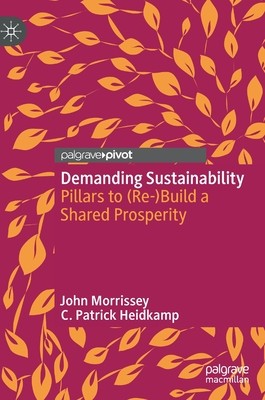
- We will send in 10–14 business days.
- Author: John Morrissey
- Publisher: Palgrave Macmillan
- ISBN-10: 3031189574
- ISBN-13: 9783031189579
- Format: 14.8 x 21 x 1 cm, hardcover
- Language: English
- SAVE -10% with code: EXTRA
Reviews
Description
Longer term thinking and new approaches to development and prosperity have never been more urgently required. Since 2020, the precarity of the global economy, links between ecological destruction and public health and disparities in levels of exposure and vulnerability to systemic disruption have all been thrown into stark relief. In this book the authors put forward a series of principles on which economic and development policy for the post-Covid era should be developed. These are outlined as five 'pillars' through which to (re-)build a shared prosperity in the aftermath of the Covid-19 global shock. The five pillars are an ecological prosperity (pillar one), a decarbonized economy (pillar two), a shared (cost) burden (pillar three), a transformative social sustainability (pillar four) and a just resilience (pillar five). The book provides a framework through which policymakers, decision-makers, politicians, community groups and the corporate sphere might begin to consider, map out, and plan for just transitions in their domains.
EXTRA 10 % discount with code: EXTRA
The promotion ends in 19d.08:22:16
The discount code is valid when purchasing from 10 €. Discounts do not stack.
- Author: John Morrissey
- Publisher: Palgrave Macmillan
- ISBN-10: 3031189574
- ISBN-13: 9783031189579
- Format: 14.8 x 21 x 1 cm, hardcover
- Language: English English
Longer term thinking and new approaches to development and prosperity have never been more urgently required. Since 2020, the precarity of the global economy, links between ecological destruction and public health and disparities in levels of exposure and vulnerability to systemic disruption have all been thrown into stark relief. In this book the authors put forward a series of principles on which economic and development policy for the post-Covid era should be developed. These are outlined as five 'pillars' through which to (re-)build a shared prosperity in the aftermath of the Covid-19 global shock. The five pillars are an ecological prosperity (pillar one), a decarbonized economy (pillar two), a shared (cost) burden (pillar three), a transformative social sustainability (pillar four) and a just resilience (pillar five). The book provides a framework through which policymakers, decision-makers, politicians, community groups and the corporate sphere might begin to consider, map out, and plan for just transitions in their domains.


Reviews